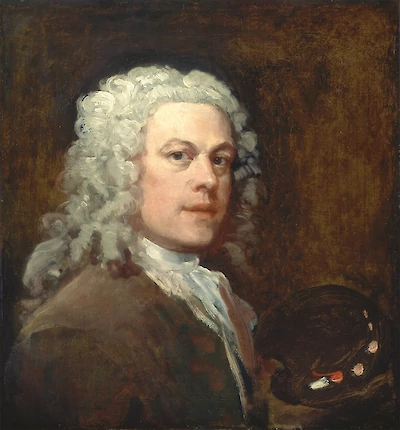

William Hogarth
A printmaker analyzes taste — and beauty comes out on top
1697 – 1764I now offer to the public a short essay, accompanied with two explanatory prints, in which I shall endeavour to shew what the principles are in nature, by which we are directed to call the forms of some bodies beautiful, others ugly; some graceful, and others the reverse; by considering more minutely than has hitherto been done, the nature of those lines, and their different combinations, which serve to raise in the mind the ideas of all the variety of forms imaginable. At first, perhaps, the whole design, as well as the prints, may seem rather intended to trifle and con-found, than to entertain and inform: but I am persuaded that when the examples of nature, referr'd to in this essay, are duly consider'd and examined upon the principles laid down in it, it will be thought worthy of a careful and attentive perusal: and the prints themselves too will, I make no doubt, be examined as attentively, when it is found, that almost every figure in them (howodly soeverthey may seem to be group'd together) is referr'd to singly in the essay, in order to assist the reader’s imagination, when the original examples in art, or nature, are not themselves before him. And in this light I hope my prints will be consider'd, and that the figures referr'd to in them will never be imagined to be placed there by me as examples themselves, of beauty or grace, but only to point out to the reader what sorts of objects he is to look for and examine in nature, or in the works of the greatest masters.
My figures, therefore, are to be consider'd in the same light, with those a mathematician makes with his pen.
My figures, therefore, are to be consider'd in the same light, with those a mathematician makes with his pen, which may convey the idea of his demonstration, tho’ not a line in them is either perfectly straight, or of that peculiar curvature he is treating of. Nay, so far was I from aiming at grace, that I purposely chose to be least accurate, where most beauty might be expected, that no stress might be laid on the figures to the prejudice of the work itself. For I must confess, I have but little hopes of having a favourable attention given to my design in general, by those who have already had a more fashionable introdcution into the mysteries of the arts of painting, and sculpture. Much less do I expect, or in truth desire, the countenance of that set of people, who have an interest in exploding any kind of doctrine, that may teach us to see with our own eyes. It may be needless to observe, that some of the lastmention'd, are not only the dependents on, but often the only instructors and leaders of the former; but in what light they are so consider'd abroad, may be partly seen by † a burlesque representation of them, taken from a print pubish'd by Mr. Pond, design'd by Cavr. Ghezzi at Rome. To those, then, whose judgements are unprejudiced, this little work is submitted with most pleasure; because it is from such that I have hitherto received the most obligations, and now have reason to expect most candour. Therefore I would fain have such of my readers be assured, that however they may have been aw'd, and over-born by pompous terms of art, hard names, and the parade of seemingly magnificent collections of pic-tures and statues; they are in a much fairer way, ladies, as well as gentlemen, of gaining a perfect knowledge of the elegant and beautiful in artificial, as well as natural forms, by considering them in a systematical, but at the same time familiar way, than those who have been prepossess'd by dogmatic rules, taken from the performances of art only: nay, I will venture to say, sooner, and more rationally, than even a tolerable painter, who has imbibed the same prejudices. The more prevailing the notion may be, that painters and connoisseurs are the only competent judges of things of this sort; the more it becomes necessary to clear up and confirm, as much as possible, what has only been asserted in the foregoing paragraph: that no one may be deterr'd, by the want of such previous knowledge, from entring into this enquiry.